

Cohen’s tourist typology- The 4 major types of tourists
Disclaimer: Some posts on Tourism Teacher may contain affiliate links. If you appreciate this content, you can show your support by making a purchase through these links or by buying me a coffee . Thank you for your support!
Cohen’s tourist typology was one of the first major typologies developed in the travel and tourism space. If you are studying travel and tourism, you will probably be introduced to Cohen’s tourist typology at some point (and that’s probably why you are here now!). If you are wondering what this tourist typology is all about and how Cohen categorised his four major types of tourists, then you have come to the right place… read on….
Who is Erik Cohen?
What is cohen’s tourist typology, cohen’s types of tourists, institutionalised tourists, noninstitutionalised tourists, cohen’s tourist typology- 4 types of tourists, the drifter, the explorer, the individual mass tourist, the organised mass tourist, why is cohen’s tourist typology beneficial, types of tourists- further reading.

Erik Cohen is an Emeritus Professor in the Department of Sociology and Anthropology, Hebrew University of Jerusalem. Erik focuses his research in Social Anthropology, Sociological Theory and Tourism Studies. Erik is most well known for his work on tourist typologies published in the 1970s.

Cohen’s tourist typology is a model that aims to categorise tourists into different types. Cohen’s theory is well known as being the first to attempt to categorise types of tourists. Cohen derived this theory on the types of tourists based on his knowledge of sociology and anthropology and applied it to the context of tourism, he is not necessary a tourism specialist. Cohen’s theory was first published in 1972 in his article entitles ‘Towards a Sociology of International Tourism .
Whilst a lot has clearly changed in the tourism industry since the 1970, Cohen’s tourist typology has continued to be used as a guide for understanding the different types of tourists throughout the years by academics and tourism industry professionals.

The types of tourists identified by Cohen in his typology are based on a continuum- a spectrum that allows tourists to be placed at some point between the familiar and the novel. Essentially, Cohen teaches us that there are many different types of tourists, some who seek familiar experiences (such as familiar food chains, branded accommodation options that they know or languages that they can speak), others who seek entirely new experiences (new cultures, new locations, new languages etc) and those who fall somewhere in between.

In Cohen’s tourist typology there are two groups of tourists- the institutionalised tourists and the noninstitutionalised tourists. Lets take a look at what these are-
Cohen describes institutionalised tourism as the organised mass tourism . This is the tourism industry that is designed to make the tourist experience as smooth and as organised as possible. There are a number of tourism agents involved with institutionalised tourism, such as travel agents , tour operators and tourism resorts. Institutionalised tourists experience novelty with the comforts of the familiar.
Cohen’s noninstitutionalised tourists are the opposite of institutionalised tourists. These types of tourists do not seek the commodified products and services that the mass tourism industry provides, instead, the institutionalised tourist seek deep immersive and experiential travel experiences that cannot be obtained through institutionalised tourism. These types of tourists travel independently and are often in search of adventure, the new and the unfamiliar and authenticity .
Cohen breaks down his tourist typology further, suggesting that there are four main types of tourists:
The first two types of tourists (the Drifter and the Explorer) are deemed noninstitutionalised tourists and the latter two (The Individual Mass Tourist and the Organised Mass Tourist) are examples of institutionalised tourists. Now, lets take a deeper a deeper look at what each of these four types of tourists are…

The Drifter is the type of tourist that is least connected with the mass tourism industry. Drifters typically have an authentic and deep immersive experience, opting for staying with members of the local community rather than in hotels and spending their time in the local community. They seek adventure and plan their own itineraries. This type of tourist always opts for novelty over familiarity- you won’t see a Drifter eating in McDonalds or shopping in Zara!

This type of tourist is similar to a Drifter in that they seek novelty over the familiar, however Explorers do often have a little more interaction with the commodities associated with the tourism industry. For example, an Explorer may travel independently and enjoy an immersive cultural experience, but they may rest their head on a hotel pillow at the end of the day. This type of tourist will generally eat and shop local, but don’t be surprised if they enjoy a Big Mac from time to time too.

In Cohen’s tourist typology the Individual Mass Tourist seeks the familiar. This type of tourist wants familiar food, they want to be able to communicate in a familiar language and they want to stay in types of accommodation that they are familiar with. However, the Individual Mass Tourist is not constrained by the likes of group tours and activities- yes, they may book their holiday through a travel or use a local tour guide, but they will typically opt for solo travel over group tours.

The last of the types of tourists outlined in Cohen’s tourist typology is the Organised Mass Tourist. The Organised Mass Tourist seeks the familiar in the same way that the The Individual Mass Tourist does, however, they tend to do this as part of an organised group. This type of tourist seeks the familiar over novelty every time and they are often found with tour guides and undertaking group tours. The Organised Mass Tourist will generally have an itinerary or a plan and they will stick to it.
Whilst we can easily criticise this theory for being too generalised and for accounting for the specific and the individual, there is no questioning that it does have real-world value. By better understanding the different types of tourists tourism businesses and tourism industry stakeholders can better provide for the tourists- they can tailor their products and services better, they can understand the tourist demands and desires and they can help to improve the overall quality of the tourism provision that is offered to particular tourists.
There are many academic studies which utilise Cohen’s tourist typology as a means to understanding particular issues within the tourism industry, you can see one example here .
If you have found this article helpful, you may also enjoy these-
- Butler’s Tourism Area Life Cycle Model: A simple explanation
- Leiper’s Tourism System: A simple explanation
- 150 types of tourism! The ultimate tourism Glossary
- The mass tourism industry EXPLAINED
Liked this article? Click to share!
The different types of Tourism according to Cohen, UNWTO, motivation and type
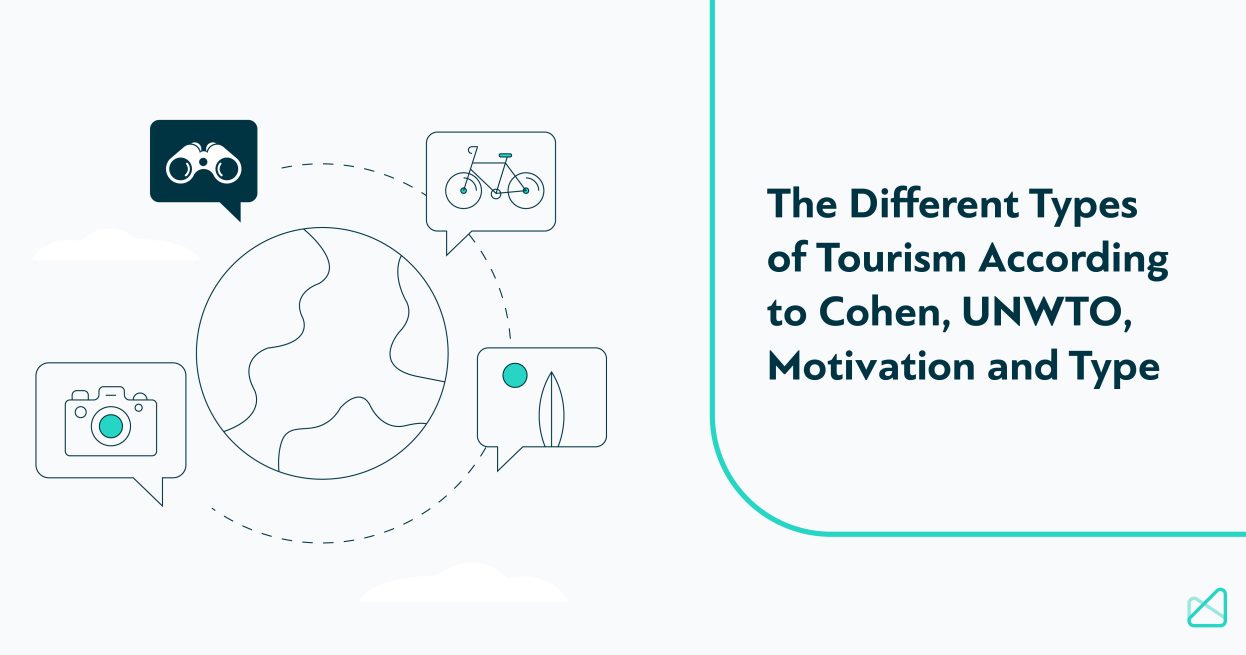
Types of Tourism according to the UNWTO
Types of tourism according to cohen:, types of tourism according to motivation, types of tourism according to type and purpose of the trip.
The Tourism industry has a direct impact on the global economy. In 2019 alone, 1.4 billion international arrivals were recorded, which is equivalent to one-fifth of the world’s population .
Due to the number of components that play an active role in tourism, there are an infinite number of criteria that can be used to classify it. In this article we will share what we consider to be the most significant of these criteria.
The World Tourism Organization defines three basic types of tourism in its glossary :
- Domestic Tourism : these are the activities carried out by a person within their country of residence as part of a touristic trip.
- Inbound Tourism : carried out by a non-resident tourist in the destination as part of a touristic trip.
- Outbound Tourism : tourism activities undertaken outside the country of residence.
These types can be combined with each other to give rise to other categories:
- Internal Tourism : combines domestic and inbound tourism, as it encompasses the activities that both foreigners and nationals undertake within the borders of a country.
- National Tourism : Combines domestic and outbound tourism, as it involves trips made by residents of the same country both within and outside its borders.
- International Tourism : carried out both by residents outside their country of residence (outbound) and by foreigners within the borders (inbound).
Beyond this categorization, there is a sociological approach, in which Erik Cohen, sociologist and winner of the UNWTO Ulysses Prize for his contribution to the knowledge of tourism, defines different types of tourism associated with the organization of the trip, as well as the nature of the interaction with the destinations.
Institutionalized
- Individual mass : this is the tourist who goes to an agency in search of a tourist package. They make individual trips, taking advantage of the destination’s infrastructure established for mass tourism.
- Organized mass : these travelers take organized tours where all the details are covered and there are no surprises of any kind. It is usually family tourism without any major variations.
Non-institutionalized
- Drifter : this is the independent tourist who backpacks. They do not depend on the infrastructure and have little influence on the destination, as they interact with the environment and usually integrate with it.
- Explorer : This is the tourist who seeks new experiences, often extreme. The definition they use is “off the beaten track.” They prioritize the experience and can sacrifice comforts.
Cohen also proposes a division based on the importance of travel in people’s lives . There are five types of experience:
- Fun or recreational tourism
- Distraction tourism
- Experiential tourism
- Experimental tourism
- Existential tourism
Valene Smith, a key figure in the Anthropology of Tourism, defines in her introduction to “Host and Guest” the following types of tourism, according to the motivation of the trip:
- Recreational
- Environmental
And later she expands the classification according to Tourist types , where she describes:
They engage with the destination environment and are willing to adapt their behavior to the environment. They choose to visit less-traveled places and do not want to be seen as tourists.
Elite tourists
They also travel in small groups and adapt to local life, but for a limited time. They demand more amenities.
Off-beat tourists
These are independent tourists who break away from traditional itineraries and are looking to see new places. They use guidebooks for tips.
Unusual tourists
They travel on package tours or tours to visit indigenous communities. Their interest in local cultures is contemplative, and they demand the comforts of modern life so as not to take risks in the exchange.
Incipient mass tourists
Although not large in volume, these groups are beginning to demand infrastructure in the destinations they visit.
Mass tourists
They do not forgo the comforts of their country of origin and expect to be served in their own language.
Charter tourists
They purchase tours for short periods of time, demand high-quality services and have almost no interaction with the local environment.
There are infinite approaches and classifications for tourism around the world. A study by the Inter-American University for Development (UNID) makes an interesting distinction between “Classification” and “Typology” in which it defines eight kinds of tourism according to their form, which can, in turn, be subdivided into types.
Beyond these broad approaches, there is a series of categories approved by the UNWTO that is defined by the destination and purpose of the trip , and can be summarized as follows:
Rural Tourism
This takes place in destinations with low population density where agriculture and forestry are prevalent. The main objective is to experience nature, culture and productive activities.
- Angling tourism
- Observation tourism
The core element is responsible contact with the natural environment, where the tourist observes and carries out activities in the open air.
- Bird watching
- Observation of autochthonous species
Adventure tourism
Tourism in contact with nature, involving physical dexterity to undertake activities that are generally carried out in the open air.
- Scuba diving
- Sport fishing
Cultural Tourism
This takes place in destinations that have a remarkable cultural heritage and preserve its value. The objective is to discover and enjoy these values and traditions.
- Field trips
- Artistic performances
- Festivals or other cultural events
- Visits to sites and monuments
- Folklore
- Art
Business Tourism
Regardless of the destination, the reason for the trip is business or professionally motivated. This type of tourism entails a specific approach, as it is carried out by demanding travelers, with little time and particular needs.
- Attending conferences and congresses
- Attending Trade Fairs and Exhibitions
- Other professional and business reasons
Gastronomic Tourism
The trip must involve culinary experiences in the destination, which can range from enjoying a meal to learning how to cook.
UNWTO notes the high potential of this category as a sustainable activity to boost the development of local economies and promote inclusiveness.
A growing trend worth highlighting is Wine Tourism.
Coastal, Maritime and Inland Water Tourism
Includes all water-related activities. The most prominent category is Sun and Beach Tourism . However, the following should not be overlooked:
- Inland river navigation
Urban Tourism
This tourism takes place in a non-agricultural economic environment. Urban destinations offer a wealth of experiences related to art, architecture, commerce, social activities and good transport connectivity
Health tourism
Relates to the physical, mental or spiritual health benefit that travel can offer, provided by specific activities.
- Medical tourism
- Wellness tourism
- Spiritual tourism
Mountain Tourism
The nature of the trip is determined by the relief of the destination. It is not related to adventure sports, but to enjoying the attributes of the environment.
Educational Tourism
The objective is focused on acquiring new skills and knowledge.
- Exchange trips
- Language courses
- Tours for school groups
Sports Tourism
This is aimed at those who are going to enjoy or watch a sporting activity.
- Attending the Football World Cup
- Attending the Olympic Games
- Sports Delegation Trips
Each category will also be defined according to the needs and possibilities offered by the tourist destination, but in principle it is important to be able to sustain a basic classification in order to guide the statistics and to be able to work on comparisons and equivalences, depending on the focus we are addressing.
Bibliography
Erik Cohen , Major trends in contemporary tourism . Department of Sociology and Anthropology. The Hebrew University of Jerusalem, 2004
Erik Cohen , The sociology of tourism: Approaches, issues and findings. in Annual Review of Sociology, 10,373-392., 1984
Smith, Valene , Hosts and guests. The anthropology of tourism . Philadelphia, University of Pennsylvania Press, 1989.
Subscribe to our newsletter
Yay you are now subscribed to our newsletter.
Cristóbal Reali, VP of Global Sales at Mize, with over 20 years of experience, has led high-performance teams in major companies in the tourism industry, as well as in the public sector. He has successfully undertaken ventures, including a DMO and technology transformation consulting. In his role at Mize, he stands out not only for his analytical and strategic ability but also for effective leadership. He speaks English, Spanish, Portuguese, and Italian. He holds a degree in Economics from UBA, complementing his professional training at Harvard Business School Online.
Mize is the leading hotel booking optimization solution in the world. With over 170 partners using our fintech products, Mize creates new extra profit for the hotel booking industry using its fully automated proprietary technology and has generated hundreds of millions of dollars in revenue across its suite of products for its partners. Mize was founded in 2016 with its headquarters in Tel Aviv and offices worldwide.
Related Posts
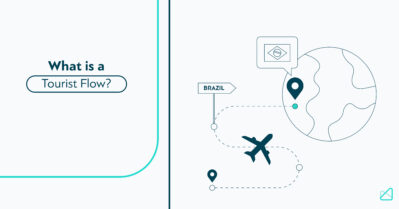
What Is a Tourist Flow? 6 Characteristics
4 min. In recent decades, tourism has experienced a remarkable growth from an elitist activity to a mass phenomenon. According to the UNWTO, the turnover of tourism today equals, or even exceeds, exports of oil, automobiles or food products. It is a continuous flow of travellers that has become a key element in the socio-economic […]
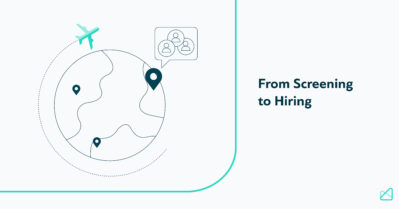
From Screening to Hiring: A Guide to Effective Recruitment in the Travel Industry
6 min. The recruitment process of new employees is not based on a paradigm that applies across industries, instead, it revolves around best practices. The same goes for travel companies, including travel tech brands. We are talking about a very profitable market that reached $10.0 billion in 2023, attracting entrepreneurs and numerous workers. It simply […]
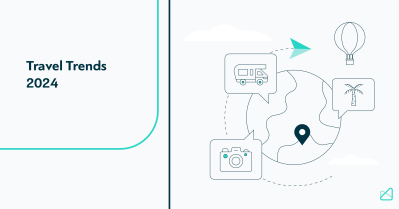
Unveiling the 13 Hottest Travel Trends of 2024
13 min. No one knows better than you how dynamic the realm of travel is. Dynamic shifts brought by technological strides, ever-changing traveler priorities, and global events are the new normal in 2024. How do you navigate this landscape that keeps transforming? You should familiarize yourself with the very travel trends that shape the world […]
Explorer vs. Tourist: What's the Difference?
Key Differences
Comparison chart, contribution, explorer and tourist definitions, is a "tourist" always on vacation, what drives an "explorer", are "tourists" only international travelers, does an "explorer" always travel to remote places, what's "eco-tourism", can a "tourist" contribute to local economies, can "tourism" affect local cultures, are "explorers" professionals, can exploration be a hobby, can "explorers" influence environmental conservation, are there still new places for "explorers", do "tourists" need special skills, are "explorers" always solitary, do "explorers" face danger, do "explorers" require specific education, what's "sustainable tourism", what's "mass tourism", did historical "explorers" change world views, is "tourism" an industry, are all "tourists" interested in culture.

Trending Comparisons

Popular Comparisons

New Comparisons

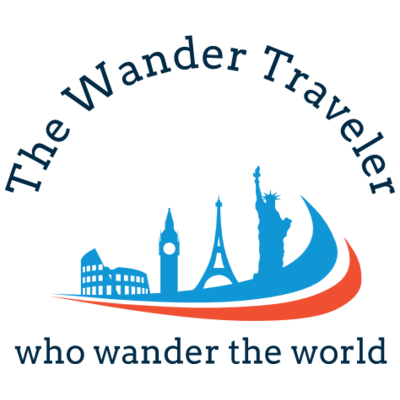
Home » BLOG-EN » Beyond travel » Traveler´s life style » Tourist Type: What is yours and what to do?
Tourist Type: What is yours and what to do?
- July , 2019
- Jose Carlos Costa
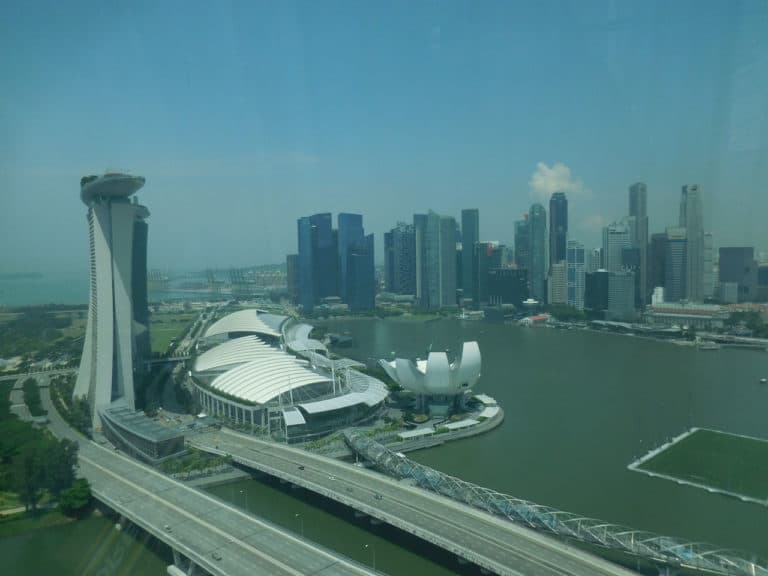
Discovering your tourist type is important for you to have the best travel experience.
There is no better or worse style than the other. Everyone is good, what is important is where you feel best.
You can now be in one and then switch to another as long as you are willing to take on a new posture.
Just to simplify the conversation, I will not distinguish between tourists and travelers here. Here we will call everyone as a tourist.
At this point, the style can be for anyone. The difference will be in the intensity of each characteristic that each one has.
If you have any questions about traveling, see Everything you need to know to travel more and better.
Example: The tourist and / or standard traveler
The first point is they look for ready-made travel packages.
Both the tourists and travelers who are in this category will travel with tour packages, the difference is the tourist standard will seek for travel packages to Disney.
On the other hand, standard traveler will seek for immersion travel packages in the knowledge of yoga in Rishikesh (world yoga capital) in India.
To find out your tourist type, we need to observe two characteristic.
- What tourist type are you?
- What kind of tourism do you like to do?
How to plan your trip around the world of your dreams.
Get the knowledge and tools that will make you an expert in traveling around the world, with
- Total freedom of choice.
- Lower cost because you do not have to pay anyone to do it for you.
- You can change your plans at any time and for any reason.
- You can cancel, change and simply do not pay fines or penalties.
1 – What tourist type are you?
A – the tourist standard:.
The tourist who follows the standards. It has the following characteristics:
- He looks for ready-made travel packages.
- Well formatted tours.
- Come to the restaurant, where everyone is.
- Go on the schedule and standard attractions of each place.
- Traveling the most within the possible standard.
The standard tourist aims to be as comfortable as possible and within what he knows.
They look for the places where your behavior standard fits into the destination or go to the most “famous” places.
Get the structured trip with times and places already well-known.
They like to go where everything looks like their house, eats as close to their taste and avoids anything out of standard.
Tourist seek to know places, food, and people that are in a certain way within a comfort zone.
Also seek the security of always having someone taking care of all the details of the trip.
Advantages of being a tourist standard:
- The tranquility, security and comfort during the trip.
- Lots of tour package options.
- Total travel costs much more affordable.
As they are within your traveling standard the disadvantages in reality can be seen as opportunities to change style.
B – The Tourist explorer:
This is what, although most follow, seeks to find some alternative. Its characteristics are as follows:
- He even goes in the standard places, but tries to find out something more from each place.
- Look for some alternative tours.
- Likes to try new restaurants, shows, etc.
The tourist explorer has the main characteristics of the tourist standard, but is willing to go a little further than what is offered.
It is also open and go in alternative places, but with the comfort and safety of someone taking care of the main details.
It is open to take some “risks” to find new places.
Look for travel packages to places a bit off the main attractions.
Advantages of the tourist explorer.
- It continues in the comfort of the known, but has the possibility to try something new.
- The cost of travel continues at a reasonable level.
- The amount of options may be smaller, but still very easy to find.
C – The Independent Tourist type:
This is the restless type and does not like to follow the pattern, wishing to avoid mass tourism in favor of an individualized and independent approach.
Its characteristics are:
- Rarely does the flow.
- Prefer to explore places without a pattern to follow.
- Usually do not use closed travel packages.
- Avoid to the maximum being in the places and schedule that the other ordinary tourists are.
They tend to explore their destinations, chosen on their own and at their own pace, with an emphasis on enjoying local food, architecture, history and culture.
The main objective is to know the places as close as possible to the residents reality.
He leaves his comfort zone and is not afraid to try.
It seeks to do everything that is not what it knows in its day to day.
They share their passion for discovering unusual places and for adventures.
Advantages of the independent tourist type.
- Total freedom to come and go and when you want.
- Know all possible cultures.
- As you have no restrictions, your options are limitless.
- The costs are as varied as possible
D – Luxury Tourist.
They are tourists who like to feel unique. Its characteristics are:
- Exclusive services / services.
- They do not like to feel in the crowd.
- Beside cam be in the same places, but with personalized treatment.
- Travel with a certain isolation like SPA, all inclusive, cabins etc.
The luxury tourist is looking for unique experiences, even if they are in common places.
Everything revolves around the comfort and exclusivity of food, hotels, shows etc.
They prefer all-inclusive services where sophistication and exclusivity are high.
The luxury traveler wants to go without stress, out of routine, that their needs are met and hopes that their expectations are surpassed.
E – Business tourist.
They are those who are traveling to work. Its characteristics are.
- You have very little time in each place.
- Usually they visit a few places and only the main ones.
- They prefer restaurants, shops, shows where “professionals” attend.
- You must always maintain a position that is consistent with the company where you work.
Beside the business tourist has little time to explore places on his own, he still uses all the means of a tourist, such as hotels, restaurants, etc.
Although new technologies affect the amount of business travel, such as videoconferencing, it is still one of the most important types in the tourism industry.
The business tourist is looking for ease as they do not have the time to look around.
Beyond of course they need to maintain a more professional posture.
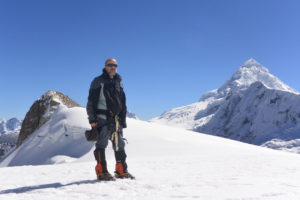
Become a smart Traveler
Subscribe now to receive my tips, knowledge and tools. It will let you travel more and better
2 – What kind of tourism do you like to do?
Find below some of the most common types of tourism:
Cultural tourism
People travel with the focus on knowing the main historical, artistic and cultural points.
Concentrating on the big cities, famous historical places, including festivals or any kind of traditional celebration / party of a region etc.
- Ruins of temples and other buildings of Ancient Greece.
- Historical cities of Minas Gerais.
- Palaces and museums of Paris.
Consumer tourism.
Basically they are short trips, on excursions or even individual trips to acquire products of the place.
Usually they are made by the products being of lower cost, exclusive manufacturing and / or reduction of taxes.
Many people from the interior come to São Paulo (Capital) to buy products on the street March 25th.
Cities in the state of São Paulo and its specialties:
- City of Cunha, the city of ceramics
- Embu das Artes, the city of artisans.
- São Bento do Sapucaí, the city of wood sculptures.
- Serra Negra, the city of knits and winter clothes
Study tourism
Tourism with the aim of carrying out some course.
The courses can be on the most varied subjects (like gastronomy, arts and languages) and have various durations.
Certainly the best known are studying languages and exchanging in another country.
Business tourism
Certainly the best known. It is defined as tourism made with a professional purpose.
It can be from a meeting, workshop, sales promotion etc.
The main thing is that the reason for the trip is related to the work of each one.
Gastronomic Tourism
Gastronomic tourism has as main objective to try the traditional gastronomy of the place.
- Visit the various gastronomic festivals of São Paulo.
- Stroll through the municipal market of São Paulo.
- Indulge in traditional Bixiga canteens
- 13 bars to enjoy happy hour with delicious skewers in São Paulo
Eco tourism
Here the tourist is interested in having contact with the local nature. Usually people are concerned with the ecological preservation of places
Adventure Tourism
It is a tourist type that is always looking for “adrenaline”. Looking for opportunities to carry out activities that involves a little risk, seeking to overcome their limits.
A good example is going to New Zealand, considered the world capital of extreme sports.
See here my 23 day trip through New Zealand with MotorHome
Religious Tourism
Religious tourism aims to visit places with meaning in religion or personal beliefs.
In Brazil we have:
- Caravans for Aparecida de Norte.
- Wash the stairs of the church of Senhor do Bonfim in Bahia.
- Círio de Nazaré in Belém do Pará.
- Juazeiro do Norte (Father Cicero) in Ceará.
My type of traveler
I am an independent traveler and explorer who likes adventure tourism, ecological and cultural.
So I do not like travel packages, follow the flow. I like to go to nature and have some better challenge.

How about you? What is your traveler type?
Leave your comment. You can send me an email I will be happy to answer.

The wander traveler
I’m José Carlos Costa, an adventurer who decided to wander the world in search of meeting people, places and cultures.
Join me on this journey of discovery, where I will share many photos, events and tips to help you also venture into this world..
Other subjects that may interest you.
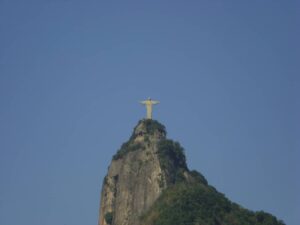
17 best things to do in Rio de Janeiro
Rio de Janeiro is certainly the best-known tourist destination in Brazil. However, most come with the image of the beaches of Ipanema and Copacabana, Christ
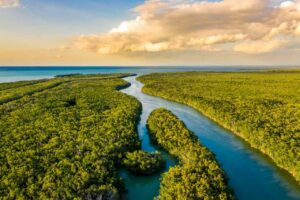
Exploring Everglades National Park: Top Must-See Attractions
Everglades National Park is the largest subtropical wilderness in the United States. Being the third largest national park, it is full of mangroves and swamps.
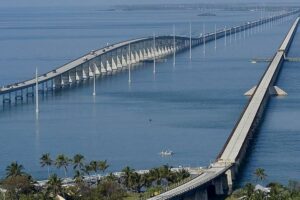
11 unmissable activities to explore the best of Key West.
When you think about Key West, the question usually comes to mind that it is the closest point in the United States to Cuba, also

Discover the ideal time to purchase your international travel insurance.
When you’re booking a flight or travel package and that little box appears asking you to buy international travel insurance now? Comes to your mind.
Send a message
Planing your travel tips and tricks.
Here are tips and tools to make the journey more enjoyable.
If you still have doubt.
Check the blog area with the materials that will help you on your trip as:
Book your flight.
Finding cheap air tickets can be difficult and stressful, but with my blog’s tips and using Skyscanner or Momondo the task can be even fun. Today are the most complete tools on the market . In my experience I have seen that even using others these two end up having the best prices.
Book your accommodation.
If you prefer Hostel a great tool is Hostelwold , If you want besides hostels, other options use the Booking.com . I have used both very often and always find the best prices.
Travel insurance.
Insurance is what we never want to use, but it is traumatic if we need and not have it. It will cover the costs of any eventuality of illness, injury, theft and / or ticket cancellations, etc. It is extremely important to have as you never know what can happen. I have used the WorldNomads , which always have the insurance coverage that travelers need, in addition to having coverage worldwide.
Table of Contents
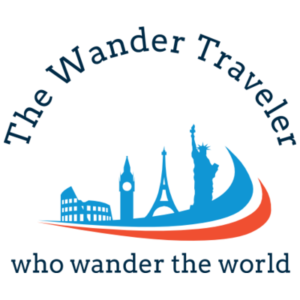
GET MY BEST TIPS DIRECTLY IN YOUR EMAIL!
Copyright 2024 © all rights reserved. the wander traveler, leave a reply cancel reply.
What is Explorer Tourism? Why Philippines?
What is “explorer tourism”? In a nutshell, explorer tourism is all about going somewhere that is so new to tourism that you may be the first person to experience or discover something there. The additional benefit of being the first to experience or discover something is that you frequently receive the honor of naming the something.
Some examples may be: scuba diving in an area where nobody has been before and discovering an uncharted sea mount with rare corals flourishing; while hiking a forest trail you find a flower that does not look quite like anything that you can find in any reference book; river trekking a tributary to a popular river you discover a cave that opens into a vast chamber that is home to a rare specie of fruit bat; or, you discover a rock with pictographs on it that are quite unlike any previously recorded and may be evidence of an ancient civilization.
By being one of the first to explore a location you also have the opportunity to help the people of the area to understand what is interesting to other potential visitors.
The challenge for many parts of the World, that are just starting to explore the concept of tourism promotion, is that they do not know what potential tourists will find interesting. Oft times there is an assumption that to please a tourist you must endeavor to offer what a tourist is already familiar with – be it food, drink, environment or amenities. In fact, with the exception of the fashionable-sheep who flock to places like Boracay or Pi Pi islands, the majority of tourists take the trouble to travel because they want to experience the difference and uniqueness of a location (be it food, drink, environment or amenities) and not its similarity and familiarity.
Visiting one island recently, my partner and I spent the best part of three days receiving the combined knowledge of twenty five, young island residents; the list that they imparted, of unique island features, flora and fauna, finally numbered more than 100 items . . . and we had not yet tapped the knowledge-base of the island’s elders!
Why is the Philippines at the top of the list of explorer tourism destinations?
The main reason why the Philippines is at the top of the list of explorer tourism destinations is two fold: geography and fiscal focus (or rather the previous lack of focus (on tourism development) in the national budget).
The Philippines has approximately 7107 islands, the majority of which have only been investigated by the occasional fishermen looking for fresh water or food. In other words, unlike in most countries around the World, with an established tourism focus, the Philippines has only recently started to take inventory of potential attractions in remote locales.
Coupled with this is that the previously stated direction for growth of the Philippines tourism industry has been in pursuit of the development of, what I call, mass-tourism (e.g the beach in Boracay, casinos in Clark, golf and casinos in Laoag).
In recent discussions with senior personnel in the Philippine Department of Tourism, the focus for 2015 and beyond will be the promotion of all of the other exciting adventures that you can have in the country, i.e. the things that explorer tourism most usually discovers. However, as most of the people who are tasked with exploring the post-2015 adventure vacations are the same people who have thus far been advising Boracay, Clark etc. on how best to handle the needs of tourists, there is a potential for a disconnect between expectation and delivery.
If you really want to explore somewhere untouched by commercial tourism and if you really want to discover something that is totally new or rare, come to the Philippines and get off the beaten track in places like: Sibale , Sibuyan and Marinduque . Or, send an email to us here at GetWet Asia [[email protected]] and let us know how/what you like to explore or what you would like to discover.
Tags: Explorer Tourism , Philippines
Events Calendar | Newsletter | Social Media
Copyright © 2008-2024 GetWet-Asia.com; All Rights Reserved Contact GetWet-Asia: [email protected]
The Difference Between Exploring and Tourism
We are born explorers. A land-locked human will find any way to explore their surroundings. First by learning how to climb trees, descend into caves, scale mountains. That not being enough, we build boats to explore the rivers and seas, airplanes to soar into the sky, submarines to explore the depths of the oceans, and drills to bore deep into the earth. When that wasn't sufficient, we began to reach for the stars.

Yuri Gagarin took that first step, making a single orbit around the Earth on April 12, 1961. He of course became an instant celebrity and was honored with a multitude of accolades -- including his image on a 100 ruble coin. Alan Shepard was the second man in space, and was afforded full hero status in the United States.
But what about the third man in space? Have you ever heard of Soviet Cosmonaut Gherman Titov? Although certainly a great man, he's unlikely to be popping up as the answer to a quiz show million dollar question. While he had the distinction of being the first man to sleep in orbit, making it into space just wasn't the same the third time around.
Why? Because the first time you set foot on a new land it's exploration. The second time you set foot on that same land it's tourism.
We need that buzz of excitement that comes from exploring something new.
During the moon landing in July 1969 that was so dramatically televised throughout the world, who didn't imagine themselves in the shoes of Neil Armstrong? For that fleeting moment we all wanted to be there. But four months later we had landed again -- this time as tourists. It was undoubtedly an incredible mission filled with great science, but it couldn't capture the same sense of excitement of Armstrong's landing in the mind of the public.
And just getting there isn't enough. To be an explorer, you have to move. Poke around. Look under a rock. Climb a mountain. When Columbus landed in the Bahamas in 1492 after a five-week voyage, he didn't stop and spend the rest of his time drawing pictures of the beach. He dove in. He explored. He sailed to other islands. He didn't take photographs from 200,000 feet up. He dug through the bushes like we all did when we were kids. He got his clothes dirty and probably broke a bone or two.
Don't get me wrong -- orbiting a distant planet and taking millions of photos from space is good science. But it isn't really exploration. Thankfully, as technology improves our ability to act as true explorers without risking the lives of actual humans increases. NASA's intrepid Mars rovers are excellent examples of this.
Spirit and Opportunity were true explorers, and we were riveted to their journey. These robots drove around, drilled rocks and careened through craters. These were robots willing to get dirty. Dust storms? Rocks blocking the path? Bring it! Opportunity drove down the edge of Victoria crater and struggled to get back up to the rim. She found the first meteorite on another planet. Spirit's wheel spun in the sand and we worried about her. She never got out, but she had a good five years on Mars -- throwing herself headlong into a hostile and treacherous environment.
Why did the world pay so much more attention to these plucky rovers than the Viking missions to Mars? Because Spirit and Opportunity were explorers. We've all been stuck in the snow or had a flat tire interrupt our travels. And when Spirit and Opportunity encountered similar troubles we empathize in a way that we can't with a Viking craft that just sat there on the surface. The next rover set to head to Mars, Curiosity, already has 29,000 Twitter followers and 4,700 Facebook fans. I'm betting she will have plenty of adventures to report back.
So what is in store for us fifty years from now? Plenty of good science, sure. But the kid inside me is hoping for more exploration. Let's get a craft to splash through a coronal mass ejection. Let's drill through the ice of Europa and swim through the waters below. Let's cut an asteroid in half. Let's sail a submarine through the liquid surface of Jupiter.
For the next 50 years, let's not forget that kid inside all of us. The one that didn't mind getting an occasional bruise or scrape. I'm sure Yuri wouldn't want it any other way.
Exploration, tourism
- Living reference work entry
- First Online: 01 January 2015
- Cite this living reference work entry

- Xiangping Li 3
49 Accesses
Exploration is the act of searching for the purpose of discovery. This act occurs throughout human history, such as the Age of Exploration when Europeans explored Africa and America in the fifteenth and sixteenth centuries and recent explorations into outer space. Sir Francis Drake, Ferdinand Magellan, Christopher Columbus, and Zheng He were some of the greatest explorers in history. Explorers seek after the undiscovered and along the way encounter the dangers of disease, equipment malfunctions, hostile natives, and even loss of lives. With explorations comes a greater understanding of the world.
To emulate explorers of the old days, modern man sees tourism as a way to explore the unknown and the real life of Others (MacCannell 1976 ). Tourism is generally thought of as an activity in which individuals explore something new, novel, or different, whether it is a cultural encounter, an engagement with nature, or a physical activity. However, not all tourists have the same spirit as their...
This is a preview of subscription content, log in via an institution to check access.
Access this chapter
Institutional subscriptions
Cohen, E. 1972 Toward a Sociology of International Tourism. Social Research 39:164-182.
Google Scholar
Gray, H. 1970 International Travel: International Trade. Lexington: DC Health.
MacCannell, D. 1976 The Tourist: A New Theory of the Leisure Class. New York: Schocken Books.
Plog, S. 1974 Why Destination Areas Rise and Fall in Popularity. Cornell Hotel and Restaurant Administration Quarterly 14(4):55-58.
Article Google Scholar
Download references
Author information
Authors and affiliations.
Tourism College, Institute for Tourism Studies, Colina de Mong-Ha, Macao, China
Xiangping Li
You can also search for this author in PubMed Google Scholar
Corresponding author
Correspondence to Xiangping Li .
Editor information
Editors and affiliations.
School of Hospitality Leadership, University of Wisconsin-Stout, Menomonie, Wisconsin, USA
Jafar Jafari
School of Hotel and Tourism Management, The Hong Kong Polytechnic University, Hong Kong, Hong Kong SAR
Honggen Xiao
Rights and permissions
Reprints and permissions
Copyright information
© 2014 Springer International Publishing Switzerland
About this entry
Cite this entry.
Li, X. (2014). Exploration, tourism. In: Jafari, J., Xiao, H. (eds) Encyclopedia of Tourism. Springer, Cham. https://doi.org/10.1007/978-3-319-01669-6_648-1
Download citation
DOI : https://doi.org/10.1007/978-3-319-01669-6_648-1
Received : 19 September 2014
Accepted : 19 September 2014
Published : 18 September 2015
Publisher Name : Springer, Cham
Online ISBN : 978-3-319-01669-6
eBook Packages : Springer Reference Business and Management Reference Module Humanities and Social Sciences Reference Module Business, Economics and Social Sciences
- Publish with us
Policies and ethics
- Find a journal
- Track your research

Explorer vs. Tourist — What's the Difference?
Difference Between Explorer and Tourist
Table of contents, key differences, comparison chart, typical destinations, contribution, preparation and skills, compare with definitions, common curiosities, what drives an explorer to travel, what kind of risks do explorers face, what contributions do explorers make, what impact do tourists have on the places they visit, what preparations do tourists generally make, how do tourists ensure their safety, can someone be both an explorer and a tourist, what is the primary motivation for a tourist, how do explorers and tourists differ in their choice of destinations, what skills are necessary for an explorer, how do explorers document their travels, what do tourists typically take back from their travels, share your discovery.

Author Spotlight
Popular Comparisons

Trending Comparisons

New Comparisons

Trending Terms

{ Digital + Tourism } Blog
Αναβαθμίστε την τουριστική σας επιχείρηση με σύγχρονες διαδικτυακές τεχνολογίες και ψηφιακό marketing, tourists’ classification.

The dominant typologies of tourists are those of Cohen, 1972 and Plog, 1974. Both classify tourists according to psychological characteristics and are very similar.
• Cohen’sclassification of tourists is based on the theory that tourism combines the curiosity to seek out new experiences with the need for the security of familiar reminders of home.
He identifies four tourist types (Cohen, 1972):
- Organized Mass Tourist is the least adventurous tourist that spends most of his time in her comfortable environmental bubble 1 throughout her trip. The trip is organized in advance and the tourist has no decisions on it.
- Individual Mass Tourist is similar to the organized mass tourist, except that the tour is not entirely fixed. The tourist has a certain amount of control over her time and itinerary, and is not bound to a group. However, all the major arrangements are still made through a tour agency.
Explorer arranges her trips alone and tend to visit an un- usual destination but still seeks comforts in accommodation and transportation. She tries to mix with the locals and dares to leave the environmental bubble.
- Drifter goes further away from the environmental bubble and keeps away from tourism establishments such as hotels or tour coaches. The drifter has no fixed itinerary or timetable and makes the trip decisions herself.

• Plog suggests that travelers can be classified into three main
types based on their different personalities (Plog, 1974):
- Allocentric seeks new experiences and adventures and is outgoing and self-confident. She prefers to explore new, unusual areas and to meet foreigners.
- Psychocentric is more conservative and tends to be inhibited and less adventurous. She prefers to drive to destinations and stay in typical tourist accommodations. Safety and security are her main concerns.
- Mid-centric is the most common type that falls between the other two types.
1 In the context of mass tourism, Cohen described the environmental bubble as a familiar, comfortable microenvironment within a novel, foreign macro-environment.
Cohen, Erik (1972). Toward a Sociology of International Tourism. Vol. 1.
Plog (1974). Leisure Travel – Making It a Growth Market Again.
- Architecture and Design
- Asian and Pacific Studies
- Business and Economics
- Classical and Ancient Near Eastern Studies
- Computer Sciences
- Cultural Studies
- Engineering
- General Interest
- Geosciences
- Industrial Chemistry
- Islamic and Middle Eastern Studies
- Jewish Studies
- Library and Information Science, Book Studies
- Life Sciences
- Linguistics and Semiotics
- Literary Studies
- Materials Sciences
- Mathematics
- Social Sciences
- Sports and Recreation
- Theology and Religion
- Publish your article
- The role of authors
- Promoting your article
- Abstracting & indexing
- Publishing Ethics
- Why publish with De Gruyter
- How to publish with De Gruyter
- Our book series
- Our subject areas
- Your digital product at De Gruyter
- Contribute to our reference works
- Product information
- Tools & resources
- Product Information
- Promotional Materials
- Orders and Inquiries
- FAQ for Library Suppliers and Book Sellers
- Repository Policy
- Free access policy
- Open Access agreements
- Database portals
- For Authors
- Customer service
- People + Culture
- Journal Management
- How to join us
- Working at De Gruyter
- Mission & Vision
- De Gruyter Foundation
- De Gruyter Ebound
- Our Responsibility
- Partner publishers

Your purchase has been completed. Your documents are now available to view.
Explorer Travellers and Adventure Tourism
- Jennifer Laing and Warwick Frost
- X / Twitter
Please login or register with De Gruyter to order this product.
- Language: English
- Publisher: Channel View Publications
- Copyright year: 2014
- Audience: College/higher education;
- Main content: 272
- Keywords: future tourism ; explorer narratives ; imperial explorers ; adventure tourism ; space travel ; contemporary tourism experiences ; otherness
- Published: August 1, 2014
- ISBN: 9781845414597
- Share full article
Advertisement
Supported by
A Year Without Travel
For Planet Earth, No Tourism Is a Curse and a Blessing
From the rise in poaching to the waning of noise pollution, travel’s shutdown is having profound effects. Which will remain, and which will vanish?

By Lisa W. Foderaro
For the planet, the year without tourists was a curse and a blessing.
With flights canceled, cruise ships mothballed and vacations largely scrapped, carbon emissions plummeted. Wildlife that usually kept a low profile amid a crush of tourists in vacation hot spots suddenly emerged. And a lack of cruise ships in places like Alaska meant that humpback whales could hear each other’s calls without the din of engines.
That’s the good news. On the flip side, the disappearance of travelers wreaked its own strange havoc, not only on those who make their living in the tourism industry, but on wildlife itself, especially in developing countries. Many governments pay for conservation and enforcement through fees associated with tourism. As that revenue dried up, budgets were cut, resulting in increased poaching and illegal fishing in some areas. Illicit logging rose too, presenting a double-whammy for the environment. Because trees absorb and store carbon, cutting them down not only hurt wildlife habitats, but contributed to climate change.
“We have seen many financial hits to the protection of nature,” said Joe Walston, executive vice president of global conservation at the Wildlife Conservation Society. “But even where that hasn’t happened, in a lot of places people haven’t been able to get into the field to do their jobs because of Covid.”
From the rise in rhino poaching in Botswana to the waning of noise pollution in Alaska, the lack of tourism has had a profound effect around the world. The question moving forward is which impacts will remain, and which will vanish, in the recovery.
A change in the air
While the pandemic’s impact on wildlife has varied widely from continent to continent, and country to country, its effect on air quality was felt more broadly.
In the United States, greenhouse gas emissions last year fell more than 10 percent , as state and local governments imposed lockdowns and people stayed home, according to a report in January by the Rhodium Group, a research and consulting firm.
The most dramatic results came from the transportation sector, which posted a 14.7 percent decrease. It’s impossible to tease out how much of that drop is from lost tourism versus business travel. And there is every expectation that as the pandemic loosens its grip, tourism will resume — likely with a vengeance.
Still, the pandemic helped push American emissions below 1990 levels for the first time. Globally, carbon dioxide emissions fell 7 percent , or 2.6 billion metric tons, according to new data from international climate researchers. In terms of output, that is about double the annual emissions of Japan.
“It’s a lot and it’s a little,” said Jason Smerdon, a climate scientist at Columbia University’s Lamont-Doherty Earth Observatory . “Historically, it’s a lot. It’s the largest single reduction percent-wise over the last 100 years. But when you think about the 7 percent in the context of what we need to do to mitigate climate change, it’s a little.”
In late 2019, the United Nations Environment Program cautioned that global greenhouse gases would need to drop 7.6 percent every year between 2020 and 2030. That would keep the world on its trajectory of meeting the temperature goals set under the Paris Agreement, the 2016 accord signed by nearly 200 nations.
“The 7 percent drop last year is on par with what we would need to do year after year,” Dr. Smerdon said. “Of course we wouldn’t want to do it the same way. A global pandemic and locking ourselves in our apartments is not the way to go about this.”
Interestingly, the drop in other types of air pollution during the pandemic muddied the climate picture. Industrial aerosols, made up of soot, sulfates, nitrates and mineral dust, reflect sunlight back into space, thus cooling the planet. While their reduction was good for respiratory health, it had the effect of offsetting some of the climate benefits of cascading carbon emissions.
For the climate activist Bill McKibben , one of the first to sound the alarm about global warming in his 1989 book, “The End of Nature,” the pandemic underscored that the climate crisis won’t be averted one plane ride or gallon of gas at a time.
“We’ve come through this pandemic year when our lives changed more than any of us imagined they ever would,” Mr. McKibben said during a Zoom webinar hosted in February by the nonprofit Green Mountain Club of Vermont.
“Everybody stopped flying; everybody stopped commuting,” he added. “Everybody just stayed at home. And emissions did go down, but they didn’t go down that much, maybe 10 percent with that incredible shift in our lifestyles. It means that most of the damage is located in the guts of our systems and we need to reach in and rip out the coal and gas and oil and stick in the efficiency, conservation and sun and wind.”
Wildlife regroups
Just as the impact of the pandemic on air quality is peppered with caveats, so too is its influence on wildlife.
Animals slithered, crawled and stomped out of hiding across the globe, sometimes in farcical fashion. Last spring, a herd of Great Orme Kashmiri goats was spotted ambling through empty streets in Llandudno, a coastal town in northern Wales. And hundreds of monkeys — normally fed by tourists — were involved in a disturbing brawl outside of Bangkok, apparently fighting over food scraps.
In meaningful ways, however, the pandemic revealed that wildlife will regroup if given the chance. In Thailand, where tourism plummeted after authorities banned international flights, leatherback turtles laid their eggs on the usually mobbed Phuket Beach. It was the first time nests were seen there in years, as the endangered sea turtles, the largest in the world, prefer to nest in seclusion.
Similarly, in Koh Samui, Thailand’s second largest island, hawksbill turtles took over beaches that in 2018 hosted nearly three million tourists. The hatchlings were documented emerging from their nests and furiously moving their flippers toward the sea.
For Petch Manopawitr, a marine conservation manager of the Wildlife Conservation Society Thailand, the sightings were proof that natural landscapes can recover quickly. “Both Ko Samui and Phuket have been overrun with tourists for so many years,” he said in a phone interview. “Many people had written off the turtles and thought they would not return. After Covid, there is talk about sustainability and how it needs to be embedded in tourism, and not just a niche market but all kinds of tourism.”
In addition to the sea turtles, elephants, leaf monkeys and dugongs (related to manatees) all made cameos in unlikely places in Thailand. “Dugongs are more visible because there is less boat traffic,” Mr. Manopawitr said. “The area that we were surprised to see dugongs was the eastern province of Bangkok. We didn’t know dugongs still existed there.”
He and other conservationists believe that countries in the cross hairs of international tourism need to mitigate the myriad effects on the natural world, from plastic pollution to trampled parks.
That message apparently reached the top levels of the Thai government. In September, the nation’s natural resources and environment minister, Varawut Silpa-archa, said he planned to shutter national parks in stages each year, from two to four months. The idea, he told Bloomberg News , is to set the stage so that “nature can rehabilitate itself.”
An increase in poaching
In other parts of Asia and across Africa, the disappearance of tourists has had nearly the opposite result. With safari tours scuttled and enforcement budgets decimated, poachers have plied their nefarious trade with impunity. At the same time, hungry villagers have streamed into protected areas to hunt and fish.
There were reports of increased poaching of leopards and tigers in India, an uptick in the smuggling of falcons in Pakistan, and a surge in trafficking of rhino horns in South Africa and Botswana.
Jim Sano, the World Wildlife Fund’s vice president for travel, tourism and conservation, said that in sub-Saharan Africa, the presence of tourists was a powerful deterrent. “It’s not only the game guards,” he said. “It’s the travelers wandering around with the guides that are omnipresent in these game areas. If the guides see poachers with automatic weapons, they report it.”
In the Republic of Congo, the Wildlife Conservation Society has noticed an increase in trapping and hunting in and around protected areas. Emma J. Stokes, regional director of the Central Africa program for the organization, said that in Nouabalé-Ndoki National Park, monkeys and forest antelopes were being targeted for bushmeat.
“It’s more expensive and difficult to get food during the pandemic and there is a lot of wildlife up there,” she said by phone. “We obviously want to deter people from hunting in the park, but we also have to understand what’s driving that because it’s more complex.”
The Society and the Congolese government jointly manage the park, which spans 1,544 square miles of lowland rainforest — larger than Rhode Island. Because of the virus, the government imposed a national lockdown, halting public transportation. But the organization was able to arrange rides to markets since the park is considered an essential service. “We have also kept all 300 of our park staff employed,” she added.
Largely absent: the whir of propellers, the hum of engines
While animals around the world were subject to rifles and snares during the pandemic, one thing was missing: noise. The whir of helicopters diminished as some air tours were suspended. And cruise ships from the Adriatic Sea to the Gulf of Mexico were largely absent. That meant marine mammals and fish had a break from the rumble of engines and propellers.
So did research scientists. Michelle Fournet is a marine ecologist who uses hydrophones (essentially aquatic microphones) to listen in on whales. Although the total number of cruise ships (a few hundred) pales in comparison to the total number of cargo ships (tens of thousands), Dr. Fournet says they have an outsize role in creating underwater racket. That is especially true in Alaska, a magnet for tourists in search of natural splendor.
“Cargo ships are trying to make the most efficient run from point A to point B and they are going across open ocean where any animal they encounter, they encounter for a matter of hours,” she said. “But when you think about the concentration of cruise ships along coastal areas, especially in southeast Alaska, you basically have five months of near-constant vessel noise. We have a population of whales listening to them all the time.”
Man-made noise during the pandemic dissipated in the waters near the capital of Juneau, as well as in Glacier Bay National Park and Preserve . Dr. Fournet, a postdoctoral research associate at Cornell University, observed a threefold decrease in ambient noise in Glacier Bay between 2019 and 2020. “That’s a really big drop in noise,” she said, “and all of that is associated with the cessation of these cruise ships.”
Covid-19 opened a window onto whale sounds in Juneau as well. Last July, Dr. Fournet, who also directs the Sound Science Research Collective , a marine conservation nonprofit, had her team lower a hydrophone in the North Pass, a popular whale-watching destination. “In previous years,” she said, “you wouldn’t have been able to hear anything — just boats. This year we heard whales producing feeding calls, whales producing contact calls. We heard sound types that I have never heard before.”
Farther south in Puget Sound, near Seattle, whale-watching tours were down 75 percent last year. Tour operators like Jeff Friedman, owner of Maya’s Legacy Whale Watching , insist that their presence on the water benefits whales since the captains make recreational boaters aware of whale activity and radio them to slow down. Whale-watching companies also donate to conservation groups and report sightings to researchers.
“During the pandemic, there was a huge increase in the number of recreational boats out there,” said Mr. Friedman, who is also president of the Pacific Whale Watch Association . “It was similar to R.V.s. People decided to buy an R.V. or a boat. The majority of the time, boaters are not aware that the whales are present unless we let them know.”
Two years ago, in a move to protect Puget Sound’s tiny population of Southern Resident killer whales, which number just 75, Washington’s Gov. Jay Inslee signed a law reducing boat speeds to 7 knots within a half nautical mile of the whales and increasing a buffer zone around them, among other things.
Many cheered the protections. But environmental activists like Catherine W. Kilduff, a senior attorney in the oceans program at the Center for Biological Diversity, believe they did not go far enough. She wants the respite from noise that whales enjoyed during the pandemic to continue.
“The best tourism is whale-watching from shore,” she said.
Looking Ahead
Debates like this are likely to continue as the world emerges from the pandemic and leisure travel resumes. Already, conservationists and business leaders are sharing their visions for a more sustainable future.
Ed Bastian, Delta Air Lines’ chief executive, last year laid out a plan to become carbon neutral by spending $1 billion over 10 years on an assortment of strategies. Only 2.5 percent of global carbon emissions are traced to aviation, but a 2019 study suggested that could triple by midcentury.
In the meantime, climate change activists are calling on the flying public to use their carbon budgets judiciously.
Tom L. Green, a senior climate policy adviser with the David Suzuki Foundation , an environmental organization in Canada, said tourists might consider booking a flight only once every few years, saving their carbon footprint (and money) for a special journey. “Instead of taking many short trips, we could occasionally go away for a month or more and really get to know a place,” he said.
For Mr. Walston of the Wildlife Conservation Society, tourists would be wise to put more effort into booking their next resort or cruise, looking at the operator’s commitment to sustainability.
“My hope is not that we stop traveling to some of these wonderful places, because they will continue to inspire us to conserve nature globally,” he said. “But I would encourage anyone to do their homework. Spend as much time choosing a tour group or guide as a restaurant. The important thing is to build back the kind of tourism that supports nature.”
Lisa W. Foderaro is a former reporter for The New York Times whose work has also appeared in National Geographic and Audubon Magazine.
Follow New York Times Travel on Instagram , Twitter and Facebook . And sign up for our weekly Travel Dispatch newsletter to receive expert tips on traveling smarter and inspiration for your next vacation.
Come Sail Away
Love them or hate them, cruises can provide a unique perspective on travel..
Cruise Ship Surprises: Here are five unexpected features on ships , some of which you hopefully won’t discover on your own.
Icon of the Seas: Our reporter joined thousands of passengers on the inaugural sailing of Royal Caribbean’s Icon of the Seas . The most surprising thing she found? Some actual peace and quiet .
Th ree-Year Cruise, Unraveled: The Life at Sea cruise was supposed to be the ultimate bucket-list experience : 382 port calls over 1,095 days. Here’s why those who signed up are seeking fraud charges instead.
TikTok’s Favorite New ‘Reality Show’: People on social media have turned the unwitting passengers of a nine-month world cruise into “cast members” overnight.
Dipping Their Toes: Younger generations of travelers are venturing onto ships for the first time . Many are saving money.
Cult Cruisers: These devoted cruise fanatics, most of them retirees, have one main goal: to almost never touch dry land .

Types of tourist
This is a fascinating list of our various categories of tourists; you may be one of them, or shockingly several of them. Let's see where you land!.
The Drifter
Drifters are the kind of travelers who are least involved with the mass tourism industry. They typically have an authentic and deeply immersive travel experience, choosing to stay with locals rather than in hotels and spending their time in the local community.
The Explorer
However, these types of tourists do frequently contact a little more with the products connected to the tourism sector. Explorers also prefer novelty to the familiar. For instance, an Explorer might travel alone and take in a rich cultural experience, yet they might end the day by sleeping on a hotel cushion. This kind of traveler prefers to dine and buy locally, but don't be surprised if they occasionally enjoy a KFC.
The Individual Mass Tourist
These kinds of travelers want familiar foods, the ability to converse in a familiar tongue, and accommodations that are comfortable for them. Although they may organize their vacation through a travel agent or hire a local tour guide, the Individual Mass Tourist is not restricted by the likes of group tours and activities and will often choose solo travel over group tours.
The Organised Mass Tourist
The organized mass tourist looks for the familiar while usually traveling in a planned group. These travelers frequently travel in groups and prefer the comfortable over the exotic. They prefer the familiar above novelty. The organized mass traveler usually has a schedule or plan in place and follows it.
Allocentric tourists
Psychocentric tourists
Allocentric tourists are the polar opposite of psychocentric tourists. Psychocentric visitors are most typically connected with well-developed or over-developed tourism destinations. Many individuals will have gone there before them, so it has been tried and tested. These travelers are at ease knowing that their vacation destination will give them with the comforts and familiarities that they have come to expect.
Mid-Centric tourists
Mid-centric visitors are somewhere in the middle; they enjoy some adventure as well as some of their home comforts. Perhaps they book their vacation through dynamic packaging yet spend the most of their time in their vacation resort. Or perhaps they book a pre-arranged package but then opt to escape the crowds and explore the surrounding area.
Subscribe newsletter
Barcelona, Spain.
5 best destinations for explorers
BY READERS DIGEST
1st Jan 2015 Travel

1 - Tortuguero Village, Costa Rica

2 - Luray Caverns, Virginia, USA

3 - Landmannalaugar, Iceland

4 - The Grand Canyon, Arizona, USA

5 - Tasman Glacier, New Zealand

Unleash Your Adventurous Spirit: How To Explore Cuba Like A True Explorer
- Last updated May 26, 2024
- Difficulty Beginner
- Category Travel

Are you ready to embark on a thrilling journey to Cuba? If you're looking to unleash your adventurous spirit and explore this vibrant island like a true explorer, then look no further. In this guide, we'll take you on a captivating expedition through the hidden gems and cultural wonders of Cuba. From diving into crystal clear waters to immersing yourself in the rich history and lively atmosphere of Havana, prepare to embrace the unknown and discover the true essence of adventure in Cuba. So, fasten your seatbelts and get ready to unleash your inner explorer in this captivating island paradise.
What You'll Learn
Uncover cuba's hidden gems: authentic experiences away from the crowds, embrace cuban culture: immersion tips for a meaningful journey, explore beyond havana: must-visit cities and towns in cuba, avoid typical tourist mistakes: insider tips for a unique cuban adventure.

When it comes to traveling to Cuba, many tourists flock to the popular tourist spots such as Havana, Varadero, and Trinidad. But if you're looking for a more authentic experience away from the crowds, there are plenty of hidden gems to uncover in this beautiful Caribbean island. Here are some tips to help you uncover Cuba's hidden gems and have an unforgettable adventure.
Explore the Lesser-Known Cities and Towns
While Havana may be the vibrant capital city, there are many smaller cities and towns that offer unique experiences. Visit cities like Santiago de Cuba, Camagüey, and Holguín to immerse yourself in the local culture, architecture, and cuisine. You'll find fewer tourists and more authentic experiences.
Venture Off the Beaten Path
Cuba is known for its stunning beaches, but instead of heading to the popular resorts, explore the lesser-known beach towns. Playa Jibacoa, Cayo Largo del Sur, and Baracoa offer pristine beaches, crystal-clear waters, and a more relaxed atmosphere compared to the more crowded spots like Varadero.
Stay in Casas Particulares
Skip the hotels and opt for casas particulares, which are private homes similar to bed and breakfasts. This not only gives you a chance to interact with locals but also contributes to the local economy. You'll get an authentic experience while enjoying the comfort of staying in a home-like environment.
Take a Road Trip Through the Countryside
Rent a car or hire a local driver and take a road trip through the Cuban countryside. Explore the picturesque landscapes, visit rural villages, and interact with friendly locals along the way. This is a great way to see the real Cuba and discover its hidden treasures.
Join a Local Tour or Workshop
Instead of joining large organized tours, opt for smaller, locally-run tours or workshops. These tours are often led by knowledgeable locals who can provide insider information and unique perspectives. Whether it's a salsa dancing class, a traditional cooking workshop, or a guided walking tour, these experiences will give you a deeper understanding of Cuban culture and traditions.
Visit Cienfuegos and the Zapata Peninsula
Cienfuegos is a charming city known for its French influence and stunning architecture. Explore its historic center, visit the Palacio de Valle, and take a boat tour of the beautiful Cienfuegos Bay. From Cienfuegos, you can also visit the nearby Zapata Peninsula, home to the Ciénaga de Zapata National Park, which is perfect for bird-watching and eco-adventures.
Get Lost in Havana's Neighborhoods
While Havana is a must-visit city, instead of sticking to the main tourist areas, explore its neighborhoods. Walk around Centro Habana, Vedado, and the lesser-known areas like Miramar and Regla. These neighborhoods offer a glimpse into the daily life of Cubans and are less crowded with tourists.
Enjoy Live Music at Casa de la Música
Casa de la Música is a popular venue for live music and dancing in Cuba. While the one in Havana is well-known, there are also Casa de la Música venues in other cities like Santiago de Cuba and Trinidad. Experience the vibrant music scene, dance the night away, and mingle with locals for an unforgettable night.
Visit UNESCO World Heritage Sites
Cuba is home to several UNESCO World Heritage Sites, and exploring these sites will give you a deeper understanding of the country's history and cultural significance. Visit sites like the Viñales Valley, the Historic Center of Camagüey, and the Archaeological Landscape of the First Coffee Plantations in the Southeast of Cuba for an enriching experience.
By following these tips and venturing off the beaten path, you'll be rewarded with unique and authentic experiences in Cuba. Uncover the country's hidden gems, interact with friendly locals, and create memories that will last a lifetime.
Finding the Perfect Backpack Size for a Month of Traveling
You may want to see also
Cuba is a vibrant and unique country, with a rich history, beautiful landscapes, and a lively culture. To truly experience the essence of this Caribbean nation, it's important to embrace Cuban culture and take steps to immerse yourself in the local way of life. Here are some tips to make your journey to Cuba more meaningful:
Learn Spanish:
While it is possible to get by with English in some tourist areas, knowing some basic Spanish will greatly enhance your experience in Cuba. Take the time to learn a few key phrases and practice them with locals. Not only will this open up opportunities for deeper connections, but it will also show respect for the local language and culture.
Stay in Casa Particulares:
Rather than staying in a generic hotel, consider booking a room in a casa particular - a private homestay. This gives you the opportunity to live with a Cuban family and gain insight into their daily lives. Not only will you have a more authentic experience, but you'll also be supporting local families directly.
Try the Local Cuisine:
Cuban cuisine is a unique blend of African, Spanish, and Caribbean flavors. Don't miss the chance to taste classic dishes such as ropa vieja (shredded beef), congris (rice and beans), and tostones (fried plantains). Venture beyond touristy restaurants and find local paladares (family-run restaurants) for a truly authentic dining experience.
Engage with Locals:
Cubans are known for their warmth and friendliness. Take the time to chat with locals, ask for recommendations, and learn about their lives. Whether it's striking up a conversation with a street vendor, joining a pickup game of dominoes, or dancing salsa in a local club, these interactions will create lasting memories and give you a deeper understanding of Cuban culture.
Explore Beyond Havana:
While Havana is undoubtedly the cultural and political heart of Cuba, don't limit yourself to just one city. Explore the smaller towns and rural areas to see a different side of the country. Visit Trinidad, a charming colonial town; Vinales, known for its stunning tobacco fields; and Santiago de Cuba, the birthplace of Cuban music. Each place offers its own unique cultural experiences.
Attend Festivals and Events:
Cuba is renowned for its vibrant music and dance scene. Check the local calendar for festivals and events happening during your visit. From the renowned Havana Jazz Festival to the lively Carnaval celebrations, these gatherings provide the perfect opportunity to immerse yourself in Cuban music, dance, and community spirit.
Take Part in Cultural Experiences:
To truly understand Cuban culture, consider participating in cultural workshops and activities. Learn how to roll a cigar, dance salsa, or play traditional Afro-Cuban drums. These hands-on experiences not only allow you to immerse yourself in the local traditions but also support local artisans and craftsmen.
Respect Cuban Customs:
Cuba has its own unique customs and values. Take the time to familiarize yourself with local etiquette, such as greeting people with a handshake or a kiss on the cheek, saying "por favor" (please) and "gracias" (thank you), and avoiding sensitive topics like politics. By showing respect for the local customs, you'll be better able to connect with the people and the culture.
By embracing Cuban culture and immersing yourself in the local way of life, your journey to Cuba will become more meaningful and rewarding. Remember to approach each experience with an open mind and a willingness to learn, and you'll come away with a deeper appreciation for this fascinating country and its people.
Common Reasons Why Drivers Licenses are Invalid for Airport Travel
When planning a trip to Cuba, many travelers focus solely on Havana, the vibrant capital city famous for its historic architecture, lively music scene, and vintage cars. While Havana is definitely worth a visit, there are many other cities and towns in Cuba that offer a unique and authentic experience. To truly explore the beauty and diversity of this island nation, make sure to include some of these must-visit destinations in your itinerary:
- Trinidad: Located on the southern coast of Cuba, Trinidad is a UNESCO World Heritage Site known for its well-preserved colonial architecture. Wander through its cobbled streets and admire the vibrant, pastel-colored buildings. Don't miss the beautiful Plaza Mayor, the heart of the city, where you can relax and enjoy the local atmosphere. Explore the surrounding Valle de los Ingenios, home to sugar mills and plantations that were once part of Cuba's thriving sugar industry.
- Viñales: If you're a nature lover, Viñales is a must-visit destination. Located in the western part of the country, this picturesque valley is famous for its mogotes, tall limestone formations that dot the landscape. Take a guided tour and learn about the traditional tobacco farming techniques that have been passed down through generations. Don't forget to try a cigar made with locally grown tobacco! The stunning natural beauty and laid-back atmosphere make Viñales a perfect place to relax and unwind.
- Cienfuegos: Known as the "Pearl of the South," Cienfuegos is a coastal city with a rich architectural heritage. Visit the Palacio de Valle, a stunning Moorish-style mansion that offers breathtaking views of the bay. Take a stroll along the Malecón, a seaside promenade lined with beautiful colonial buildings. Don't miss the Teatro Tomás Terry, a grand theater that hosts various cultural events throughout the year. Cienfuegos is also a great base for exploring the nearby El Nicho waterfall or the pristine beaches of the Bay of Pigs.
- Santiago de Cuba: Located on the eastern side of the island, Santiago de Cuba is known for its vibrant music scene and Afro-Caribbean culture. Explore the lively, colorful streets of the historic center and discover the city's rich history at the Castillo del Morro or the Casa de Diego Velázquez, the oldest house in Cuba. If you're interested in music, visit the Casa de la Trova, a legendary venue where you can listen to traditional Cuban music or even join in a jam session. Santiago de Cuba is also a great starting point for exploring the Sierra Maestra mountains or the beautiful beaches of the region.
When planning your trip to Cuba, make sure to allocate enough time to explore these incredible cities and towns beyond Havana. Each destination offers its own unique charm and attractions, showcasing the diverse culture and history of this fascinating country. Step off the beaten path and discover the hidden gems that Cuba has to offer.
Which Airport Should You Travel to for Oaxaca?
Are you planning a trip to Cuba? Avoiding typical tourist mistakes is essential if you want to have a unique and authentic Cuban adventure. With these insider tips, you'll be able to immerse yourself in the local culture and experience the true essence of this fascinating country.
- Stay in Casas Particulares: Instead of booking a hotel, consider staying in a casa particular. These are private homes that rent out rooms to tourists. Not only will you get a more personal experience, but you'll also be supporting the local economy.
- Learn Some Basic Spanish: While many Cubans in popular tourist areas speak English, knowing some basic Spanish will make your trip much more enjoyable. It will help you communicate with locals, make new friends, and navigate through the country with ease.
- Explore Beyond Havana: While Havana is a must-visit city, don't limit your trip to just the capital. Cuba has so much more to offer. Visit smaller towns and rural areas to get a taste of the real Cuba. From the picturesque streets of Trinidad to the stunning landscapes of Viñales, there's something for everyone outside of Havana.
- Use Public Transportation: Instead of relying on expensive taxis, take advantage of Cuba's extensive public transportation system. Buses, shared taxis (known as "collectivos"), and even horse-drawn carriages are all viable options for getting around. Not only will you save money, but you'll also have the chance to interact with locals during your journeys.
- Try Street Food: Don't miss out on the incredible street food scene in Cuba. From delicious Cubanos (Cuban sandwiches) to crispy croquetas, you'll find a wide variety of mouth-watering dishes being sold by street vendors. Embrace the local flavors and be adventurous with your food choices.
- Experience Live Music: Music is at the heart of Cuban culture. Make sure to experience a live music performance during your trip. Whether it's a small band playing in a local bar or a big band performing in a famous salsa club, dancing to the rhythm of Cuban music is an experience you won't forget.
- Respect the Culture: Cubans are proud of their culture and traditions. Show respect by learning about their customs and following local etiquette. For example, it's customary to greet people with a kiss on the cheek, even if you've just met them.
- Embrace the Slow Pace: Cuba operates on its own time. Embrace the slow pace and don't rush through your itinerary. Take the time to sit in a plaza and people-watch, or enjoy a leisurely stroll along the Malecón. Slow down and savor the moment.
- Be Mindful of your Impact: Tourism is booming in Cuba, and it's important to be mindful of your impact as a traveler. Be respectful of the environment, conserve water, and avoid leaving behind trash. Support local businesses and artisans by purchasing their products and souvenirs.
- Connect with Locals: The best way to truly experience Cuba is to connect with the locals. Strike up conversations, ask for recommendations, and learn about their way of life. Cubans are incredibly friendly and welcoming, and they'll be happy to share their stories and insights with you.
By avoiding typical tourist mistakes and following these insider tips, you'll be well on your way to an unforgettable and unique Cuban adventure. Get ready to explore the vibrant culture, stunning landscapes, and warm hospitality that make Cuba such a special destination.
Exploring the Emerald Isle: Discovering the Possibility of Traveling to Ireland with a Schengen Visa
Frequently asked questions.

- Melissa Carey Author Reviewer Traveller

- Julia May Author Editor Reviewer Traveller
It is awesome. Thank you for your feedback!
We are sorry. Plesae let us know what went wrong?
We will update our content. Thank you for your feedback!
Leave a comment
Travel photos, related posts.
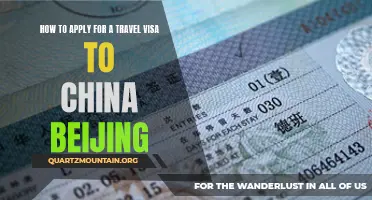
A Step-by-Step Guide to Applying for a Travel Visa to Beijing, China
- Apr 30, 2024

The Ultimate Guide to Traveling from Berlin Airport to the City Center
- May 16, 2024

The Best Ways to Travel from Vancouver Airport to Victoria
- May 19, 2024
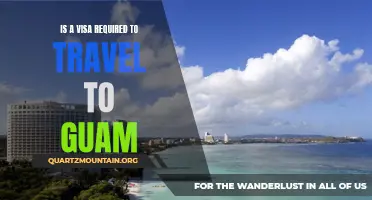
Is a Visa Required to Travel to Guam?
- May 06, 2024
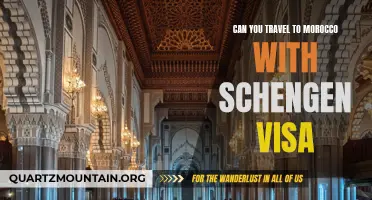
Traveling to Morocco with a Schengen Visa: Everything You Need to Know
- Mar 29, 2024

Unlocking the Secrets to Financing Your Dream Travels
- May 15, 2024

IMAGES
VIDEO
COMMENTS
Cohen breaks down his tourist typology further, suggesting that there are four main types of tourists: The Drifter. The Explorer. The Individual Mass Tourist. The Organised Mass Tourist. The first two types of tourists (the Drifter and the Explorer) are deemed noninstitutionalised tourists and the latter two (The Individual Mass Tourist and the ...
An explorer is someone who seeks out new experiences and knowledge. They are driven by curiosity and a desire to learn about the world around them. A tourist, on the other hand, is someone who travels for leisure and relaxation. They are often more interested in comfort and convenience than in learning and discovery.
Explorer: This is the tourist who seeks new experiences, often extreme. The definition they use is "off the beaten track." They prioritize the experience and can sacrifice comforts. Cohen also proposes a division based on the importance of travel in people's lives. There are five types of experience:
An "Explorer" embarks on journeys to discover new information or places, driven by curiosity, resilience, and often a taste for adventure, while a "Tourist" seeks leisure, cultural experiences, or relaxation, preferring safety and comfort on their travels. 11. "Explorer" implies a professional or passionate pursuit, where the individual is ...
Cohen (1972), a sociologist of tourism, classifies tourists into four types, based on the degree to which they seek familiarity and novelty: the drifter, the explorer, the individual mass tourist, and the organized mass tourist. Table 1 depicts the characteristics of these four types. Table 1 The Types of Tourist Type Familiarity Novelty Others
The tourist explorer has the main characteristics of the tourist standard, but is willing to go a little further than what is offered. It is also open and go in alternative places, but with the comfort and safety of someone taking care of the main details. It is open to take some "risks" to find new places.
The main reason why the Philippines is at the top of the list of explorer tourism destinations is two fold: geography and fiscal focus (or rather the previous lack of focus (on tourism development) in the national budget). The Philippines has approximately 7107 islands, the majority of which have only been investigated by the occasional ...
Erik Cohen is considered as the first tourism scholar to have developed a tourist typology from a sociological and conceptual perspective.He conceptualized a typology of international tourists based on their experiences, including the organized mass tourist, the individual mass tourist, the explorer, and the drifter.
The Difference Between Exploring and Tourism. By James Jorasch. April 12, 2011. We are born explorers. A land-locked human will find any way to explore their surroundings. First by learning how to ...
Tourism is generally thought of as an activity in which individuals explore something new, novel, or different, whether it is a cultural encounter, an engagement with nature, or a physical activity. However, not all tourists have the same spirit as their ancestor explorers. Tourist typologies have been developed to understand different types of ...
Key Differences. Explorers are driven by the desire to chart uncharted territories and expand human knowledge about remote or unknown areas. Whereas tourists are motivated by relaxation and entertainment, focusing on visiting popular and accessible destinations that are often well-documented and safe. Explorers often undertake journeys that ...
Explorer. The explorer type of tourist is characterized by a spirit of adventure and a desire to discover new places and cultures. They are curious and open-minded, and prefer off-the-beaten-path destinations where they can immerse themselves in local life and traditions. Explorers are not afraid to step out of their comfort zone and try new ...
the pioneer study of tourist typology by Cohen's (Cohen, 1974) as tourism anthropologist. The current study rouses the tourist's distinctions as an important aspect when planning for tourism destination management since 'individual mass tourist' and 'explorer' including 'drifter' are likely to look for inter-cultural contact
The tourist has a certain amount of control over her time and itinerary, and is not bound to a group. However, all the major arrangements are still made through a tour agency. Explorer arranges her trips alone and tend to visit an un- usual destination but still seeks comforts in accommodation and transportation.
Paul Beedie, University of Bedfordshire, UK: Engaging, well-written and concise, this book provides a context for the tourist-traveller debate - a microcosm of social and cultural complexity where the quotidian meets the extraordinary and the economy of colonisation meets the egos of the great explorers. It is this legacy that explains our ...
ly) with the individual mass tourist and the explorer in-between. In a recent analysis of these four tourist roles Cohen** describes them in the following terms: The organized mass tourist: This type of tourist is the least adventurous and re mains largely confined to his "environmental bubble" throughout his trip. This tourist
Published March 7, 2021 Updated March 12, 2021. For the planet, the year without tourists was a curse and a blessing. With flights canceled, cruise ships mothballed and vacations largely scrapped ...
An Explorer trip combines a bit of everything, from visiting iconic cities to trying new foods to island hopping to whatever your heart desires!
The Explorer. However, these types of tourists do frequently contact a little more with the products connected to the tourism sector. Explorers also prefer novelty to the familiar. For instance, an Explorer might travel alone and take in a rich cultural experience, yet they might end the day by sleeping on a hotel cushion.
Explorer Quotient ® is a registered ... tourism businesses to identify and understand those segments that are most likely to buy their products, to then better align their marketing and product development efforts accordingly. Put simply, EQ is a market segmentation system based on the science of psychographics. Environics Research Group, a ...
<iframe src="https://www.googletagmanager.com/ns.html?id=GTM-NWXPC8T>m_auth=phUiFUnRJl1ydWCXe3OFDQ>m_preview=env-2>m_cookies_win=x" height="0" width="0" style ...
3 - Landmannalaugar, Iceland. Found in the Fjallabak Nature Reserve, this place is so detached from modern society that they only have access to the Internet for half of the year! People travel to Landmannalaugar for its famous natural geothermal hot springs and stunning landscape. Being a relatively popular tourist spot, Landmannalaugar is ...
From diving into crystal clear waters to immersing yourself in the rich history and lively atmosphere of Havana, prepare to embrace the unknown and discover the true essence of adventure in Cuba. So, fasten your seatbelts and get ready to unleash your inner explorer in this captivating island paradise. Characteristics.